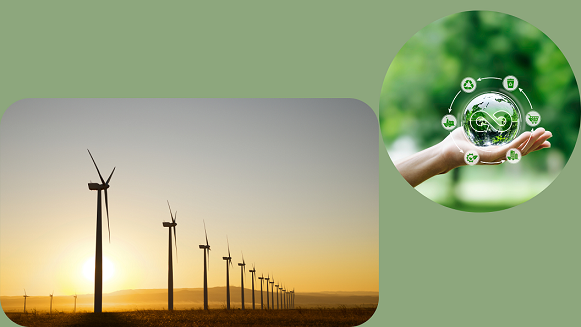
In a world of environmental problems and resource shortages sustainable tech and the circular economy are the answers. Sustainable tech minimises the environmental impact of industry, the circular economy reuses, recycles and reduces waste. Together they are a new way of consuming and producing for long term environmental and economic benefits. This article looks at how sustainable tech fits into the circular economy to change industries and change the way we think about resources.
Understanding Sustainable Technology
Sustainable technology creates solutions that harm the environment less, conserve resources and are eco friendly. Technologies like solar and wind energy, electric vehicles and energy efficient appliances are just a few examples that reduce emissions and reduce our dependence on fossil fuels. By incorporating these green tech industries can reduce their footprint and a healthier planet.
Key Benefits of Sustainable Technology:
- Reduces greenhouse gas emissions and pollution
- Promotes energy and water conservation
- Supports biodiversity by reducing habitat destruction
How Sustainable Technology Fuels the Circular Economy
Sustainable technology and the circular economy go hand in hand, driving innovation that benefits the planet, people and business. Here’s how:
- Resources Efficiency: IoT and blockchain track resources throughout the product life cycle, so we use as much as possible and waste as little as possible.
- Sustainable Materials: Materials science innovations like biodegradable plastics and recycled metals create products that fit the circular economy model.
- Energy Efficiency: Solar and wind power reduce the carbon footprint of manufacturing, so it fits the circular economy.
For example, companies using renewable energy to power recycling plants are combining sustainable tech with circular principles.
Examples of the Intersection in Various Industries
Automotive
The automotive industry is a perfect example of circular economy and sustainable tech working together. EVs reduce emissions, companies are designing vehicles with recyclable materials and parts that can be repurposed. Battery recycling and remanufacturing is also big, reducing resource extraction and environmental harm.
Fashion
Fashion is using sustainable tech through recycled polyester and organic cotton to reduce waste. Circular fashion models are encouraging resale, rental and recycling, reducing the industry’s impact on landfills and natural resources.
Electronics and IT
In electronics, sustainable tech looks like longer lasting, repairable devices, while the circular economy is promoting e-waste recycling programs and refurbished product sales. Brands like Apple and Dell are starting to use recycled components in their products, combining sustainability and circularity.
Challenges in Integrating Sustainable Tech and Circular Economy
Despite the benefits, there are some challenges to combining sustainable tech with circular practices:
- Upfront Costs: Sustainable tech can be expensive upfront, which can be a barrier for some businesses.
- Infrastructure and Policy Gaps: The circular economy relies on recycling and resource recovery infrastructure which varies by region. Policy support is needed to encourage businesses.
- Consumer Awareness: For the circular economy to work, consumers need to adopt sustainable consumption, i.e. recycling and reusing products.
Future Outlook: Innovations and Growth Areas
The future of sustainable tech in the circular economy looks good in several areas:
- Artificial Intelligence and Machine Learning: AI can help optimize recycling and product design so materials are reused and resources saved.
- Biodegradable Materials: New materials that break down naturally can transform industries like packaging and fashion, reducing landfill waste.
- Decentralized Energy Systems: Sustainable tech, like solar and wind, is part of decentralized energy systems which support the circular economy by enabling energy reuse and less dependence on centralized, resource hungry power grids.
Conclusion: A Green Path Forward
While global challenges make progress seem a little too slow, the intersection of green technology and the circular economy offers an optimistic way forward. Joining innovation, along with a commendable plan for reuse, recycling, and regeneration, will open up a future that is resilient and environmentally friendly. That said, while hurdles remain, the momentum for sustainable practices and circular principles is building, enabling both businesses and consumers to take part in making the world a greener place. Seizing such opportunities today would provide a healthy ecosystem and a robust economy for future generations.


